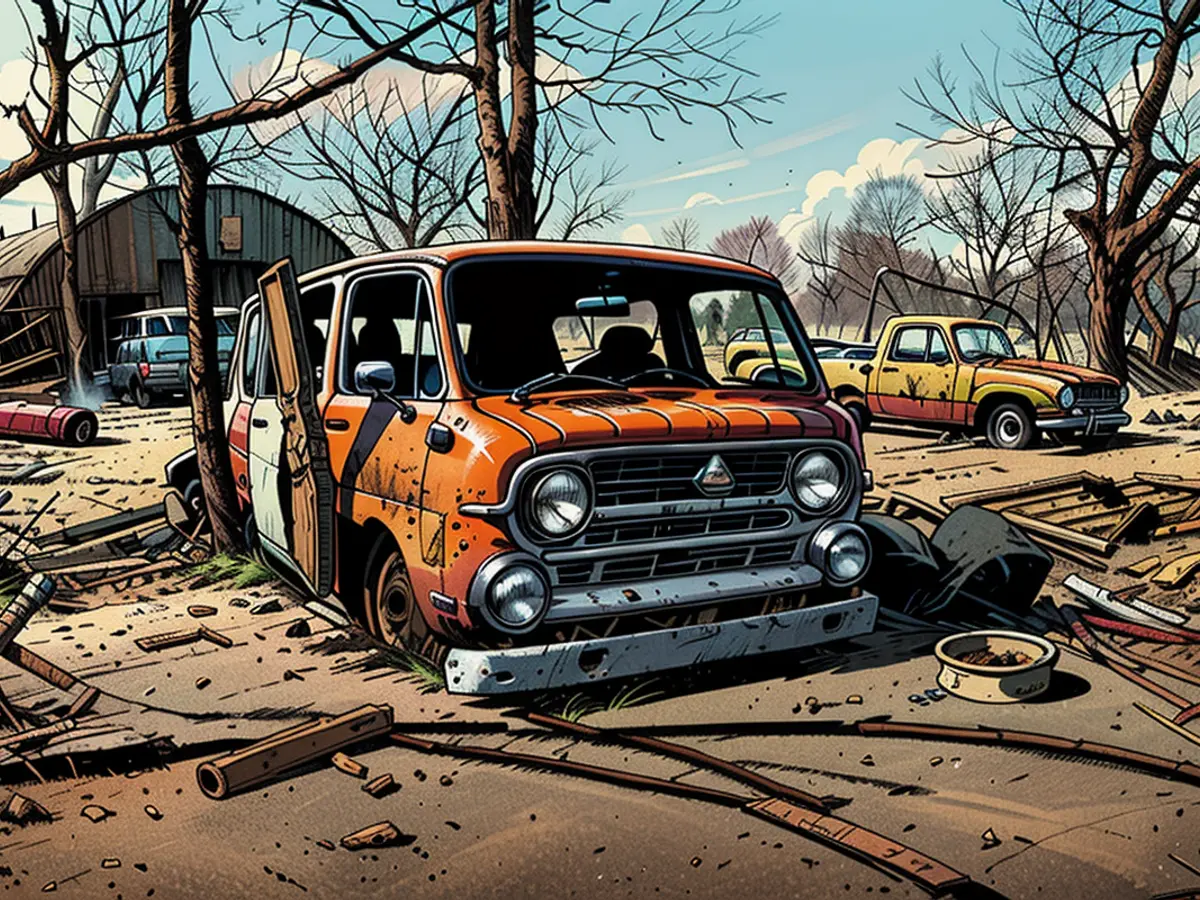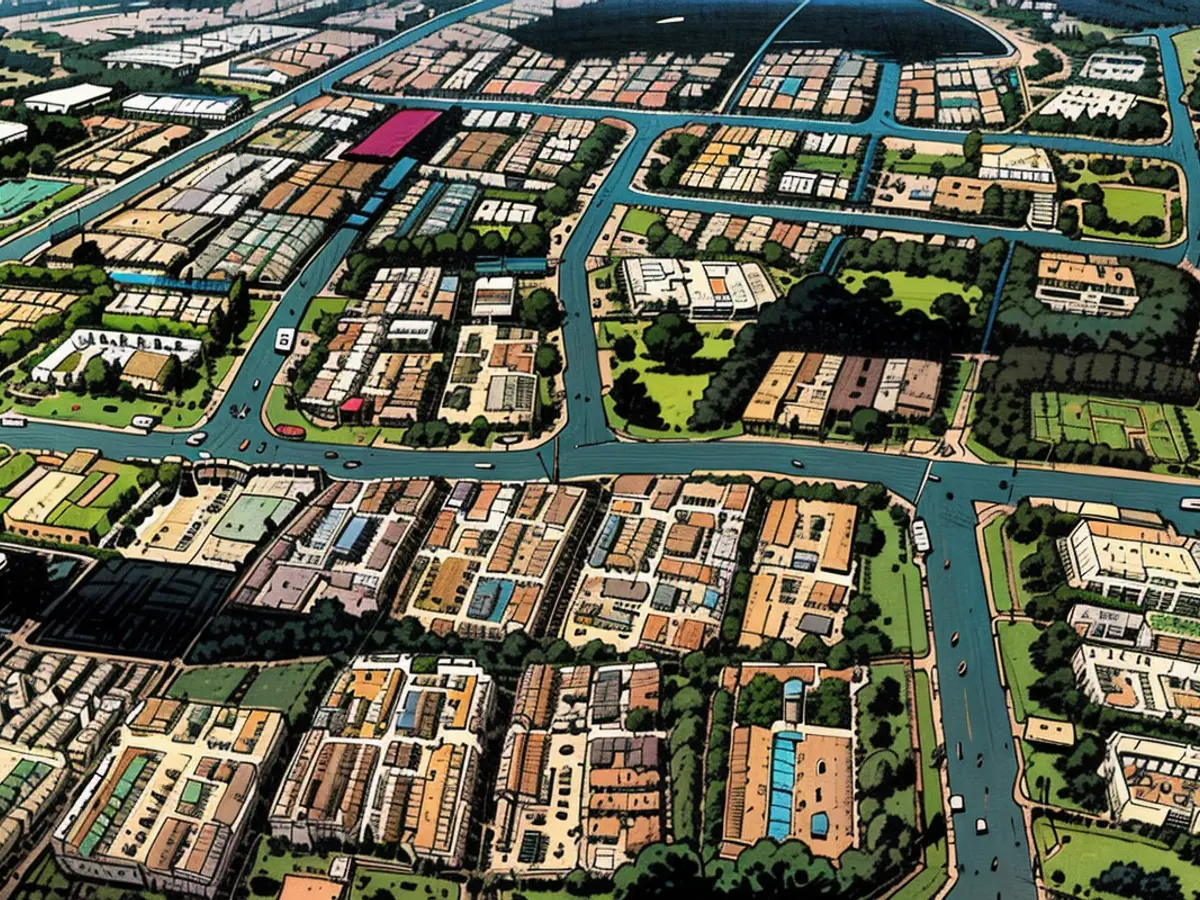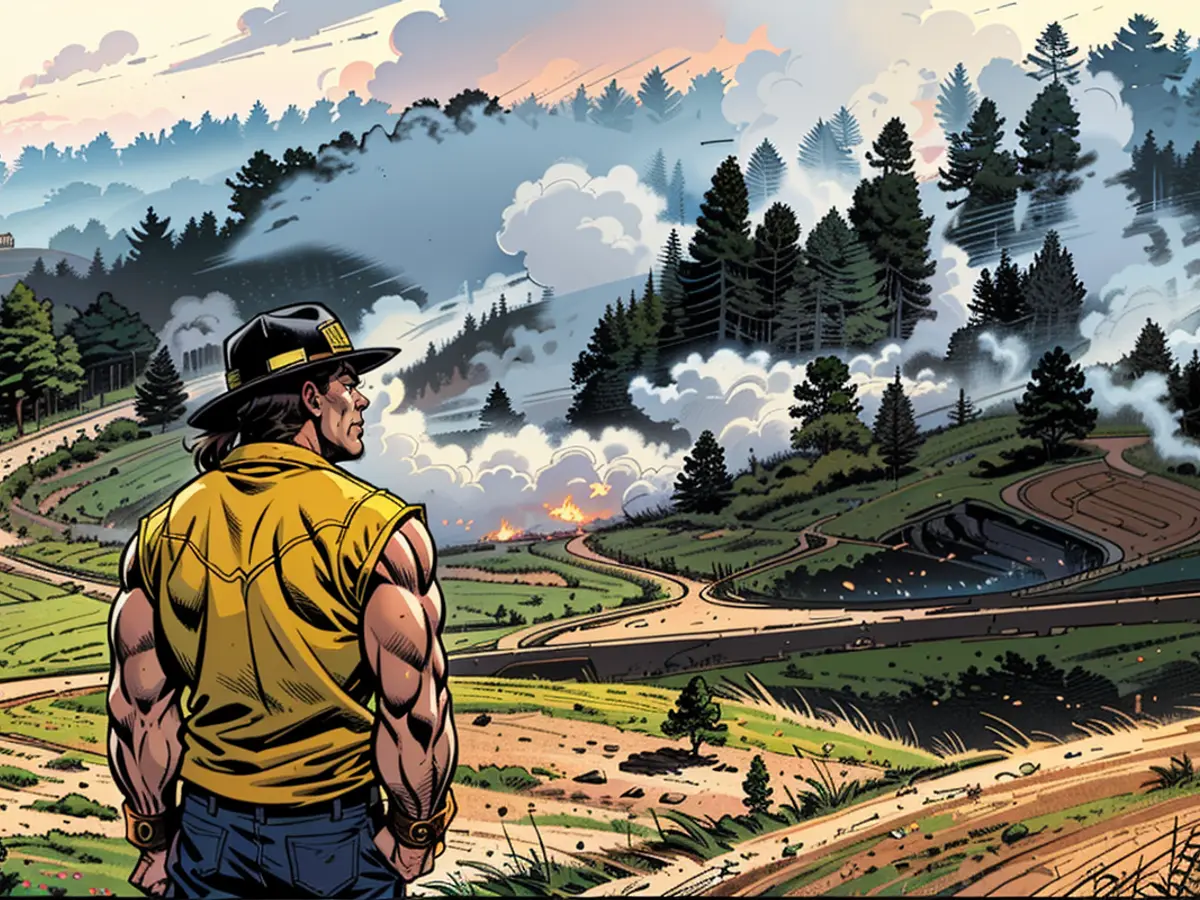A prevalent flora species is increasing the likelihood of widespread wildfires.
Grass is abundant like sunlight, and under suitable weather conditions, it's much like gasoline for wildfires: It only needs a spark to erupt.
Climate-changing emissions are causing havoc with temperature and rainfall, leading to larger and more frequent fires. These fires are fueling the destructive cycle that makes grass flourish.
"Name an environment, and there's a grass that can thrive there," said Adam Mahood, a research ecologist with the US Department of Agriculture's research service. "Any 10-foot area that isn't paved will have some kind of grass growing on it."
Grass fires are generally less intense and shorter-lasting than forest fires but can spread quickly, outpacing firefighting resources and spreading into the increasing number of homes being built near fire-prone wildlands, according to fire experts.
Over the past 30 years, the number of US homes destroyed by wildfires has more than doubled as fires burn larger and fiercer, according to a recent study. Most of these homes were burned by grass and shrub fires, not forest fires.
The West is at the highest risk, with over two-thirds of the homes burned in the past 30 years located here. Of those, almost 80% were burned in grass and shrub fires.
One factor in this trend is people building closer to fire-prone wildlands, also known as the "wildland-urban interface." The amount of land burning in this sensitive area has grown dramatically since the 1990s, as has the number of houses. By 2020, there were 44 million homes in the interface, an increase of 46% compared to 30 years ago.
Living in areas where wildfires are more likely brings obvious risks, but because humans are responsible for starting most fires, it also increases the likelihood that a fire will ignite in the first place.
More than 80,000 homes are in the wildland-urban interface, overseen by Bill King, a US Forest Service officer. King said living on the edge of nature requires active prevention measures.
Homeowners "need to do their part, too, because these fires get so large and intense that even if we have a massive fuel break, they could still spot miles ahead," King said.
'A perfect storm' for fire

Climate change-induced fires are threatening the western half of the United States from all angles.
"Globally, the places that burn the most are places with intermediate precipitation," said John Abatzoglou, a climate professor at the University of California, Merced. "It's a bit like Goldilocks. Not too wet, not too dry, just right, with plenty of ignition."
In America's grass-covered heartland, the typically dry and windy Plains, a series of compounding extremes across seasons are creating ideal fire fuel conditions in perennial grasses. Grass is more common in this region than in other parts of the US, providing an ongoing source of fuel for fires to feed on.
The region has seen more major grass fires, like the Smokehouse Creek Fire in Texas, and more damaging ones, such as the Marshall Fire in Colorado, which destroyed more than 1,000 homes in 2021.
Rainy springs promote more grass growth. Then it goes dormant or "plays dead" in the winter. Warmer winters with less snow cover, particularly in the Northern Plains, expose the grass to warmer, drier periods in late winter and early spring, according to King and Todd Lindley, a fire weather expert for the National Weather Service in Norman, Oklahoma.
Grass is exceptionally combustible due to its sensitivity to weather. It can lose its moisture content in as little as an hour or even a day after rain. Add in a spark, strong winds, and invasive shrubs that burn hotter and longer, and you have a recipe for a grass fire calamity.
"These compound extremes, these sequences of extremes that follow one another, if you get the right sequence, it can be game on for this type of wildfire," Abatzoglou said. "Essentially, you're creating a perfect storm for the fire to spread there."
Grass takeover
Extreme drought and decades of forest neglect are leading to larger and more intense fires in western forests, King said.
"When I started 30 years ago, a big fire was 30,000 acres, and now that's normal, that's typical," King said. "I'd have maybe one a year, one every couple of years of that size, and now we hear about 1-million-acre forest fires."

Grass is present in forest ecosystems, too, and acts like a fuse connecting easier-to-ignite fine fuels to larger, drought-affected tree systems, creating and spreading more intense fires.
When the trees die, grass takes over. Grass recovers from fire much faster than other plants and can burn again, often within just a few months. King has witnessed this firsthand.
"These compound extremes, these sequences of extremes that follow one another, if you get the right sequence, it can be game on for this kind of wildfire," Abatzoglou said. "Essentially, you're creating a perfect storm for the fire to spread there."
In the western regions, burned-out landscapes are seeing new growth in a matter of days with green grasses sprouting. However, forest recovery could take much longer, even potentially never happening in our lifetime, according to King.
The changing landscape is bringing fires to areas that never experienced them before. The USDA’s Mahood explained that the same drought-induced blazes that were once contained to the plains are now larger due to the presence of annual grasses that die after rain, forming a thick layer of combustible material on the desert floor.
The area affected by fires in California's Mojave National Preserve serves as an example. Two recent fires took advantage of invasive red brome grass, resulting in the destruction of hundreds of thousands of acres of Mojave Desert and over a million Joshua Trees.
Rising temperatures and drought are making it harder for native plants to recover. This, in turn, creates an expansive growth of grass.
The sagebrush, which is a dominant plant in the western United States, has experienced significant loss or degradation over the past two decades. A USGS study revealed that around 50% of sagebrush has already been compromised by grass, fires, and other stressors.
Mahood stated that this trend is worrisome and will likely worsen. More grass contributes to a higher risk of fires, not only now but also in the coming years.
"Right now, it might seem bad," Mahood said, "but it's possible that this will seem much more manageable in the next ten years. If you recall how bad the fire season was two decades ago, it now appears insignificant."

Read also:
The climate-changing emissions are causing an increase in wildfires worldwide, particularly in regions with intermediate precipitation.
These widespread wildfires are influenced by various factors, such as dry and windy weather conditions, affecting grass-covered areas and creating ideal fire fuel conditions.







